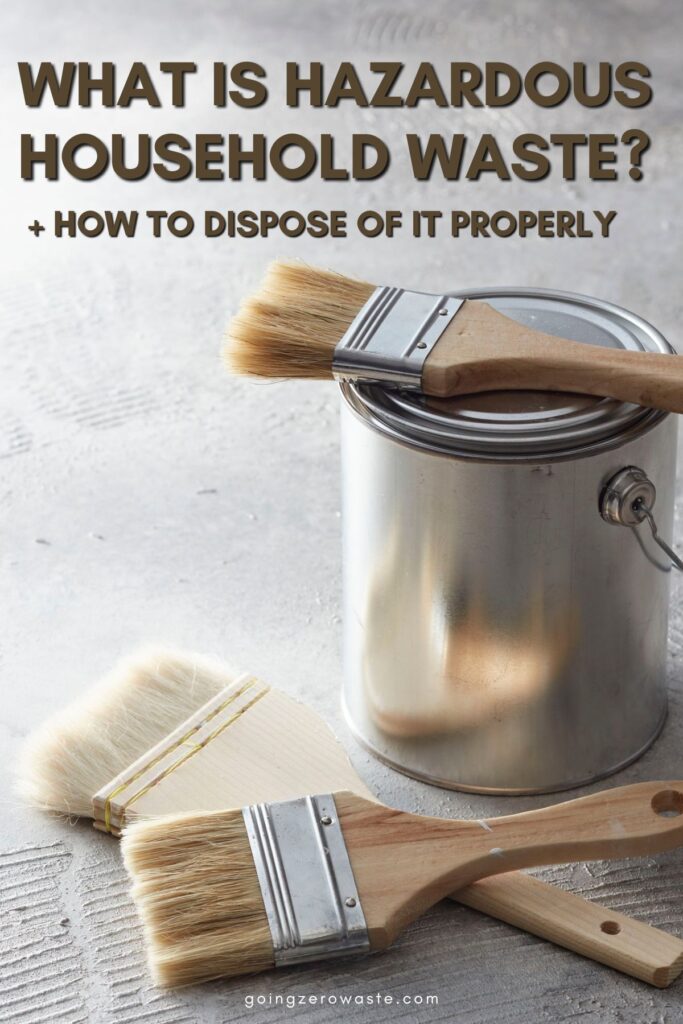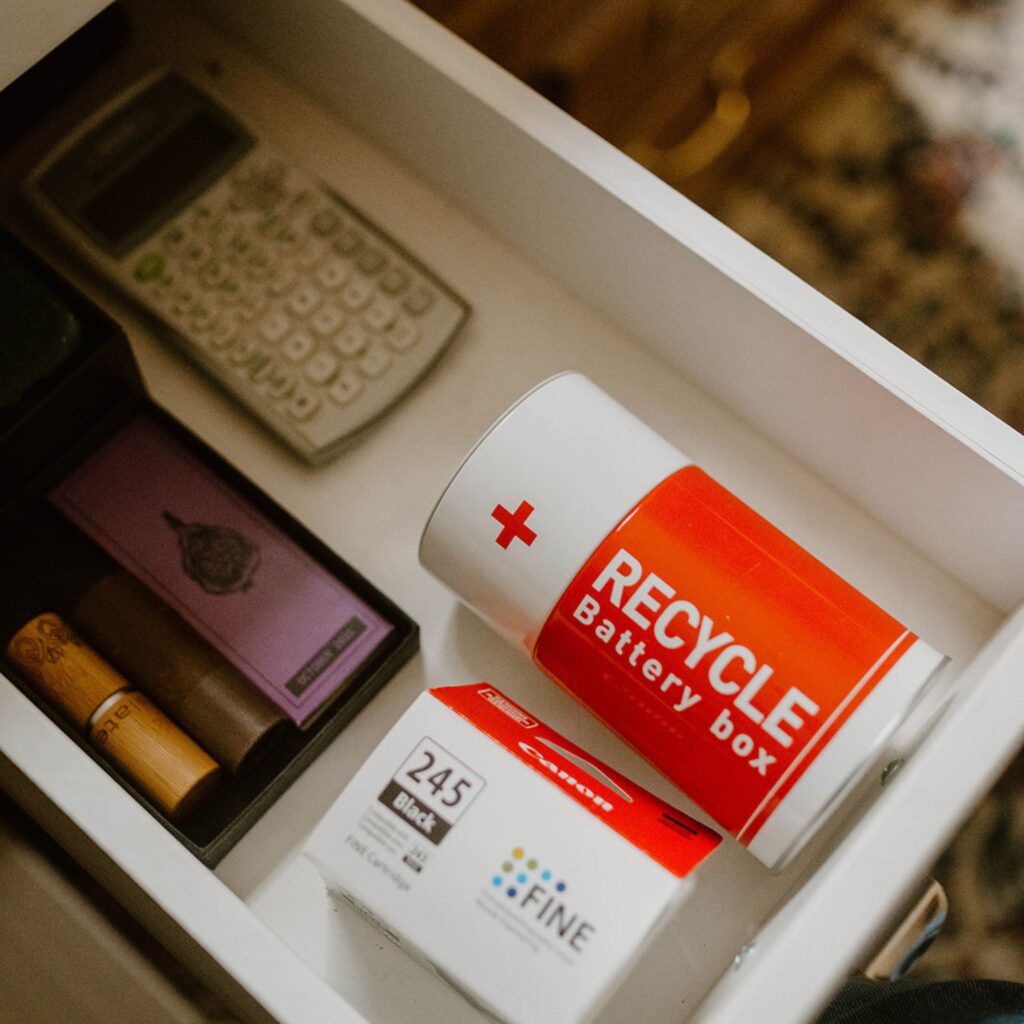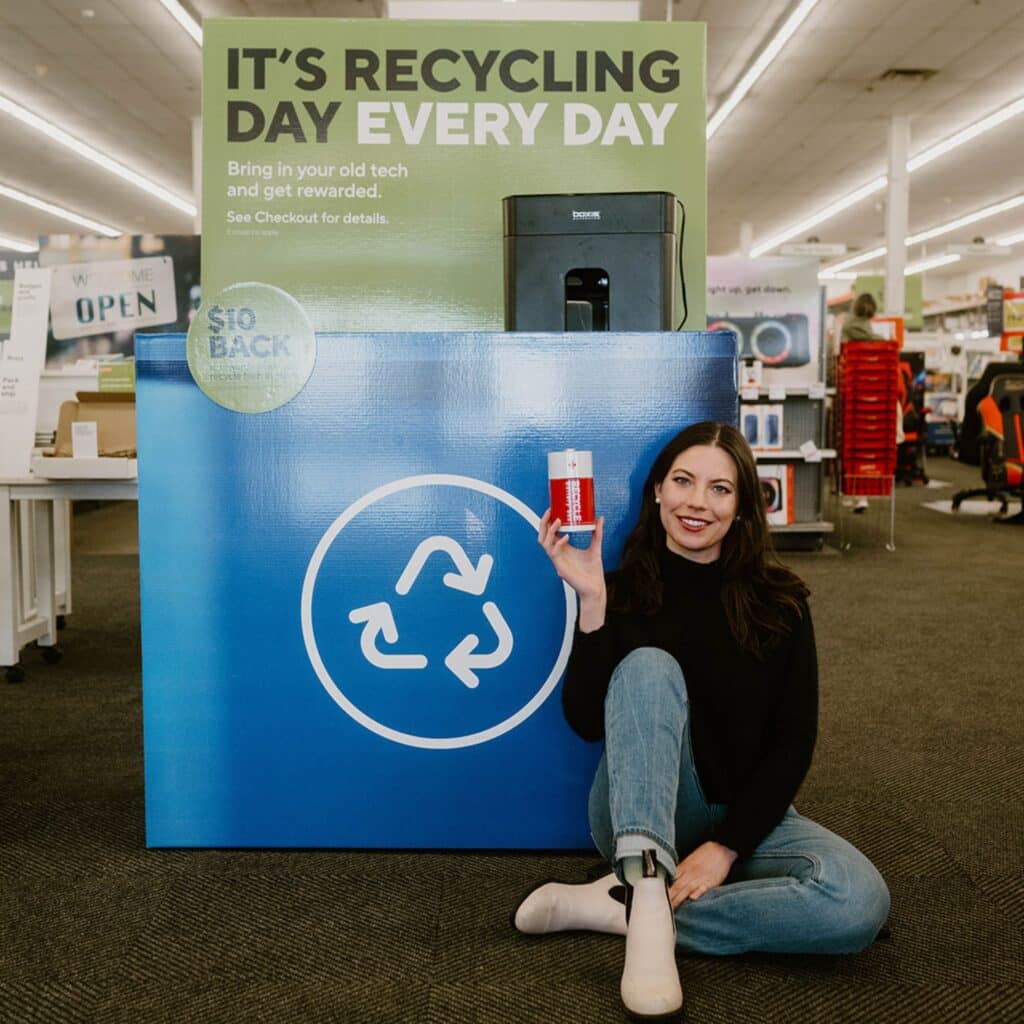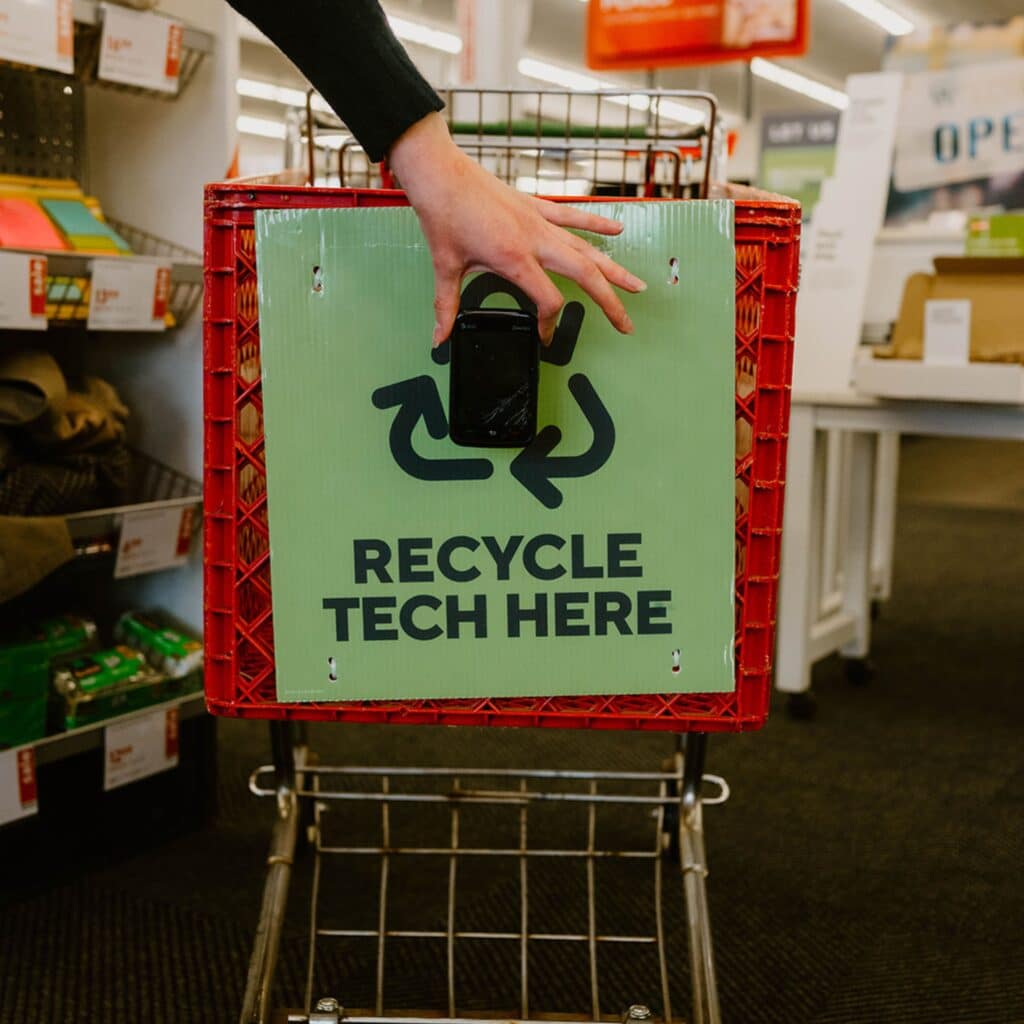[ad_1]
Last Updated on September 25, 2025
Household hazardous waste is more common than you think – paint, batteries, meds, and cleaners all need special disposal. Peek inside the cabinets, garage, or bathroom and you’ll find everyday products we assume are harmless, but many are hazardous items that can’t go in regular trash or down the drain.
When handled the wrong way, these products can harm human health, contaminate water and soil, and degrade air quality. This guide explains which household items are considered hazardous, why they’re risky, and exactly how to dispose of them safely (and where to take them).
Table of Contents
what counts as household hazardous waste?
When I think about hazardous waste I usually picture large metal barrels with glowing green goo oozing out of them straight from Scooby Doo, but the truth is it’s a lot more boring than that. In fact there’s a lot of common household items lurking in our cabinets that might surprise you!
- Paints (including even water‑based/latex)
- Motor oil, automotive fluids (antifreeze, brake fluid)
- Batteries (single use, rechargeable, lithium‑ion)
- Drain cleaners, oven cleaners, ammonia, bleach
- Glues, adhesives, solvents, strippers
- Old or expired medications, pesticides, herbicides, insecticides
- Aerosol cans, nail polish remover, certain cleaners
RELATED: My Home Restoration: Sustainable Interior Design Choices I Recommend
why these items pose real risk:
So what happens if we don’t dispose of these things in the right way? Many of these products can contain chemicals that are flammable, corrosive, toxic, or reactive, meaning they pose risks if stored incorrectly, mixed, or disposed of in ways that allow them to escape into the environment.
- Water contamination: If chemicals leach through landfills or make their way into storm drains or septic systems, they can infiltrate groundwater or nearby streams and rivers.
- Soil contamination: Toxic compounds degrade soil health, harming plants, earthworms, and the microbial life that maintains ecosystem balance.
- Air pollution: Volatile organic compounds (VOCs) in solvents, aerosol propellants, or paints can evaporate into the air, contributing to indoor air quality issues and outdoor smog or ozone problems.
- Health impacts: Direct exposure (skin contact, inhalation) can cause burns, poisoning, respiratory problems, or longer‑term chronic health effects. Vulnerable populations (children, elderly, people with respiratory issues) are particularly at risk.
Because of those risks, many jurisdictions prohibit throwing these items in trash bins or pouring them down drains. So what do you do instead?
how to dispose of toxic household waste safely and item-by-item guide:
paint (latex & oil-based)
Even latex (water-based) paint contains compounds that can harm waterways and air if it’s rinsed down a drain or left to evaporate. Oil-based paint is always hazardous. Do not pour paint down sinks or toss wet cans.
Where it goes: a local paint take-back partner (call your paint store) or your community’s hazardous waste disposal site. Many Sherwin-Williams stores offer this service. Small amounts of latex may be air-dried and then landfilled only if local rules allow.
Recyclable? Often. Latex can be reblended; oil-based requires specialized handling.
RELATED: 6 Ecofriendly Paint Brands For Every Home Project
motor oil & automotive fluids (antifreeze, brake fluid)
Used oil and automotive fluids are toxic and persistent; even small spills can contaminate large volumes of water.
Where it goes: auto shops, community disposal sites, or hauler-run drop-offs. Many services also accept antifreeze.
Recyclable? Yes for used motor oil (re-refined into new oil) and often for antifreeze. Brake fluid typically needs special treatment.
batteries (alkaline, rechargeable, lithium-ion, button cells)
Batteries can leach heavy metals or spark fires (especially lithium-ion). While batteries are recyclable never EVER put batteries in your curbside recycling bin.
Where it goes: retail drop-off programs or local disposal sites like Staples and Best Buy. Never place lithium-ion or button cells in household trash. Some localities allow alkaline in the trash, but drop-off is safest.
Recyclable? Frequently from special programs. Metals and components are recoverable, especially from rechargeables and lithium-ion.
medications (rx & otc)
Flushed or trashed medications can enter waterways and pose poisoning risks at home.
Where it goes: pharmacy or law-enforcement take-back programs and events; many locations have secure drop boxes. Avoid flushing unless local or FDA guidance explicitly directs it.
Recyclable? No. Medications are handled via secure destruction.
corrosive cleaners (drain/oven cleaners, ammonia, bleach)
These products are highly corrosive and reactive; mixing them can release dangerous gases and cause burns.
Where it goes: keep sealed in original containers and take to your local hazardous waste disposal site. Do not mix leftover products.
Recyclable? Generally no. They are typically neutralized or otherwise treated.
solvents, paint thinners, adhesives, strippers
These products are flammable and high in VOCs, posing indoor air and fire risks.
Where it goes: bring sealed, original containers to a hazardous waste disposal site; store away from heat or ignition sources.
Recyclable? Sometimes. Many solvents can be distilled and reused; some thinners are recoverable.
pesticides, herbicides, insecticides
These chemicals are toxic to aquatic life, pollinators, pets, and people even at low doses.
Where it goes: follow the label and take to a certified community hazardous waste disposal site.
Recyclable? No. They are generally treated or neutralized under strict controls.
aerosol cans
This one is a bit tricky as it also depends on what’s inside the can.
Where it goes: If a can is completely empty and your local recycling program accepts it, it is often recyclable with metals. If it is not empty, or it contained hazardous products (for example, pesticide or oil-based paint), treat it as hazardous waste and take it to a disposal site. Never puncture aerosol cans yourself.
Recyclable? Often yes when fully empty and accepted by the local program; otherwise handle via hazardous collection.
fluorescent bulbs & tubes (including cfls)
These contain small amounts of mercury that must be captured.
Where it goes: retailer lamp-recycling programs, mail-back kits, or your local hazardous waste disposal site. Handle carefully to avoid breakage.
Recyclable? Yes. Mercury is captured and glass and metal are recovered.
RELATED: Can You Recycle Lightbulbs?
nail-polish remover (acetone) & specialty solvents
These are flammable solvents that off-gas and affect indoor air quality.
Where it goes: take sealed containers to a hazardous waste disposal site; do not allow products to evaporate as a “disposal” method.
Recyclable? Sometimes via solvent recovery; otherwise treated.
how to find drop-off sites and services near you
Start with your city or county’s household hazardous waste webpage for permanent facilities or event calendars.
Then check your hauler’s website (for example, wm.com) for nearby drop-off locations, any at-your-door collection availability, and recycle-by-mail options for specific items. For targeted streams such as paint, batteries, and lamps, call retailers to confirm participation before visiting.
toxic household items: quick disposal cheat sheet
- keep it labeled: leave products in original containers; never mix chemicals.
- never in the bin: oil-based paint, pesticides, non-empty aerosols, lithium-ion & button-cell batteries.
- sometimes okay (check local rules): dried latex paint and empty aerosol cans may be accepted in curbside programs.
- where it goes:
- medications – pharmacy or police take-back boxes (don’t flush unless directed).
- batteries – retailer drop-off or your local hazardous waste site.
- paint/solvents/auto fluids/corrosives – household hazardous waste collection sites or community events.
- safe transport: seal tightly, keep upright, separate incompatibles, and carry in the trunk (not the cabin).
When in doubt, don’t throw it out – instead check your city or county website for household hazardous waste drop-offs or collection days, and call ahead to retailers for take-back programs. A few extra steps keep toxic chemicals out of our homes, waterways, and air and that protects everyone.
[ad_2]




